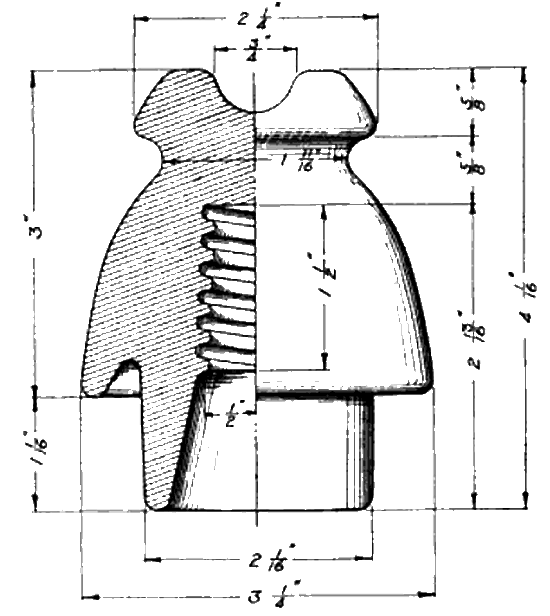[Trade Journal]
Publication: The Signal Engineer
Chicago, IL, United States
vol. 3, no. 6, p. 263-264, col. 2, 1
INSULATOR FOR 4,400-VOLT LINE.
The porcelain insulator, shown in the diagram, was designed by E. O. Sessions, of the General Electric Company, for use on 6,600-volt alternating current transmission lines, and it is recommended for lines employing a potential of over 2,200 and not exceeding 6,600 volts. The insulator was built for conditions which obtain throughout the Rocky Mountains and Pacific Slope states; and it will be used by the Atchison, Topeka & Santa Fe in the transmission line for alternating current signals which will shortly be installed between Cottonwood and Daggett, Cal. This transmission will be three-phase, 25-cycle, 4,400-volt. The insulators are being produced by what is known as the "wet process." Moist clay is used, and the insulators are subject to great pressure in shaping and are afterward baked slowly. The process of manufacture requires six weeks. Before leaving the factory each insulator must stand a "wet" test of 18,000 volts.
 |
| Insulator for 4,400-Volt Line. |
